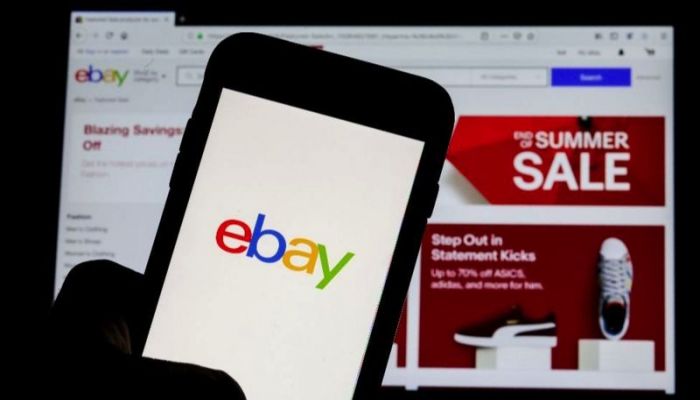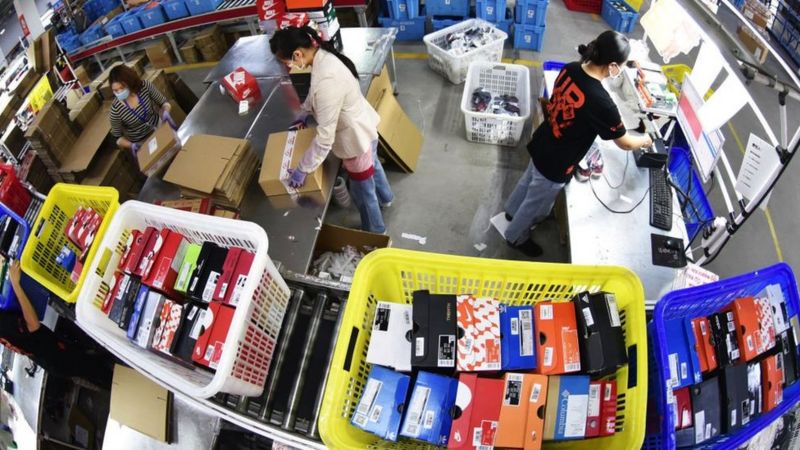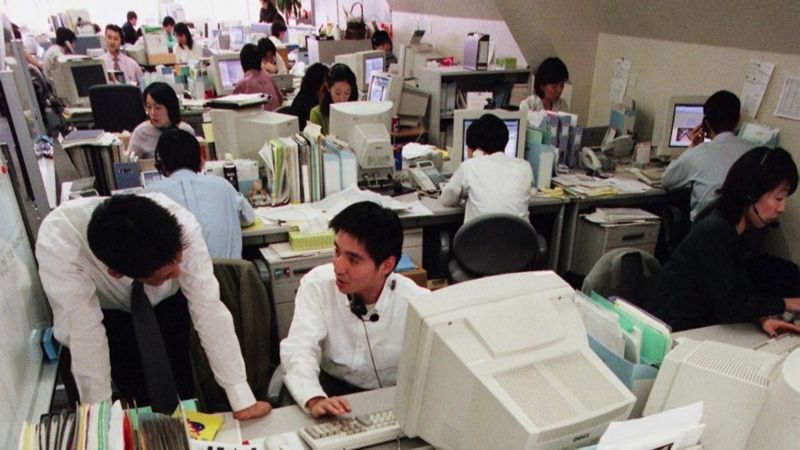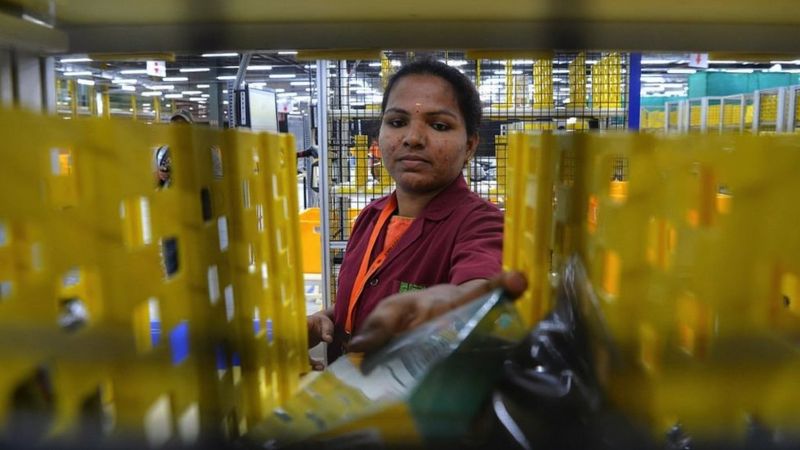
*Bryan Lufkin
Publish: 03 Aug 2020, 05:02 pm

Many in the coronavirus epidemic are now turning to online marketing, especially those who have access to computers or smartphones. Because online shopping does not require going out of the house, the risk of meeting or touching strangers can also be avoided.
Many people, of course, have been accustomed to online marketing for a long time. Amazon, eBay are very familiar names to them.
But how did online shopping start? How did online bargaining become popular?
Amazon started its online business in the mid-90s, but even in the US in 2010, only 6% of retail business shopping was online. However, the number of people shopping online in the United States in May last year increased by 31% in May this year.

Let's take a look at the UK's calculations - 3% of people in the UK used to shop online in 2006, at the beginning of 2020 it stood at 19% and after the Corona epidemic, it jumped to 30% in April this year.
People's internet usage is increasing not only in the developed world - the internet is becoming popular and easily available in different countries of the world. As a result, the market demand for internet is increasing rapidly and widely.
China has more Internet business than the United States, Britain, France and Germany. One-fifth of retail in China is online.
Analysts say that in countries where online shopping is more prevalent, the total amount of retail business on the Internet is expected to reach 4 trillion.
Online shopping was a new surprise two decades ago. Even before Kovid-19 put its paw among the people, people used to shop on the internet in Kalevadra.
At one time people thought that rare items that are not easily found in stores, can only be found on sites like eBay, to buy them you have to resort to the online market.
So how does online shopping become a part of our daily lives? And is COVID-19 making us habituated to online shopping for the next world? Let's take a look back at its early history.

How did it start?
The year was 1984. Jane Snowball, a 72-year-old woman in Gateshead, a small town in England, was watching TV in her armchair. In the meantime, using his remote control, he ordered butter, cornflakes and eggs.
Michael Aldrich, a British inventor, came up with a method called 'videotex'. Jane used that method to order food on TV, says Jonathan Reynolds, an assistant professor of retail marketing at Oxford University's College of Business.
Jane created a market sheet on her TV screen using videotex technology. The news was sent over the phone to a food supermarket in her neighborhood about what Jane wanted, then a lot of magic-like things reached the door of Jane's house.
"The technology was originally developed by Mr. Aldrich for the benefit of the elderly and those who have difficulty moving," says Professor Reynolds.
"Even then, Internet service for public use was not introduced. The technology was developed based on the limited computer network that existed at the time."
Jane assisted in Michael Aldrich's experiment. Jane later converted the TV set into a computer terminal. Aldrich delivered the news to the supermarket.
Neither Michael Aldrich nor Jane Snowball ever thought that their small technology test would build a 186 billion worth industrial structure in Britain in the future.
After Jane's experiment with buying that food, it is said that the next big discovery about online shopping was made in 1994. That year, Daniel M. Cohen, a 21-year-old computer enthusiast, set up an online marketplace called Netmarket.
That market has been dubbed "a new initiative to build a shopping mall in the cyber world." Not only that, it was said to be the first secure financial transaction online or through any digital medium.
What was sold in that market? A CD from the Sting Pop group was priced at. 12.48.

Then gradually the internet service reached people's homes. In the early days, Internet service was a squeaky dial-up effort. At first, only a handful of large companies were enthusiastic and committed to e-commerce, and now all the big corporates are online.
One of the first people to be interested in online business was Pizza Hut. In 1994, this American pizza business chain used to sell pizza online. The name of their online portal at that time was 'Pitsnet'. The ancient gray-haired website was naturally outdated. There were two places to write - the buyer's address and phone number.
However, 1994 was a landmark year for online shopping. The triumph of online shopping started from that time. Amazon came to the market that year. At the time, Amazon only sold books.
The following year, in 1995, ElBay became the largest e-commerce site in Japan. In the next few years, Rakuten also occupied the western market. Two years after starting business in Japan, Rakuten expanded their business to the Western world.
Then came Alibaba in 1999.
These companies opened the door to the world of online shopping. With their hands came the opportunity to buy a variety of products online, shoppers got the opportunity to choose products online, with a variety of creative technologies.
The wave of globalization in the mid-1990s has also been a major catalyst for online commerce. "E-commerce has become a model of a profitable and profitable market channel," says Thomai Serdari, a professor at Stern Business School at New York University. As global communication became easier, these companies also began to increase their production and create marketable product pricing structures in different countries.
"A market competition is created with the quality and price of the product, which is also acceptable to the customers. With the help of internet facility, there is an opportunity for the buyers to do research before buying a product, and also for research. Not before - the Internet delivered that new weapon to the hands of the people. "

In many countries around the world where the online market is expanding, by 2022, one-fifth of the total retail business will be shopping online.
Amazon and eBay, two of the first successful online businesses, still dominate the market. Mr. Serdari says the potential for online shopping has been created by these two companies, but in fact it is because of shoppers that the booming future of online shopping has been created.
"In fact, it is the customers who have taken advantage of such market potential. It is because of them that online shopping has become a potential business," he says.
The popularity is growing
What we mean by online shopping today is that it really started to become popular by 2017.
According to the Pew Research Center, at the end of 2016, eight out of ten people in the United States used computers or mobile phones to buy something online that year. In 2000, it was only 22%.
Smartphones will reach people all over the world by 2017. When the use of smartphones reached about 80% that year, the rate of online shopping also started to increase exponentially.
Now the data for 2019 shows that 16% of sales in the US is through e-commerce. That's 601.75 billion in spending.
Shopify, an e-commerce software company, says people spent 3.5 trillion in global online business in 2019. This explains how online business is expanding.
But the need to market online in 2020 has played a big role in its expansion. Barbara Kahn, a professor of marketing at a business school at the University of Pennsylvania in the United States, says the growth in online business that used to be normal for the next two to three years has been reduced to a single year due to the coronavirus epidemic.

And the products behind this huge increase in online sales this year were the first items sold online in 1984 - which Jane Snowball ordered - that is, food.
Between March and April this year, online sales in the United States jumped 49%. And that's because of the 110% increase in daily food sales.
Miss Kan says the main reason for this huge growth in online sales is that people are more likely to buy food on the internet.
"It's quite interesting. Because before Covid, online shopping wasn't really focused on everyday food."
He says people used to buy books, electronic items like computers online. But people do not buy computers every day. Always buy food or daily necessities.
Permanent trend?
The nature of online shopping has changed a lot in the last few years. Not just everyday necessities, vendors have come up with a wide range of products online, which has attracted people and inspired them to shop on the internet.
"About 30% of businesses are online, but since Kovid-19, online business has become essential to many people's lives," says Ms. Serdari.
Another reason for the growth of online business is that people are able to buy things of their choice at home, at their own time. Most grocery stores are ordering online and reaching the market at their doorsteps.
Many people have taken advantage of this. This new mentality, new behavior of people is strengthening the hand of e-commerce day by day.

However, it is natural for shoppers to keep an eye on their spending, even after the booming trend of online shopping.
To see if the growth of online shopping will remain the same in the long run.
It cannot be said with an oath that people will always be interested in shopping at home.
Shopping in the store is also a pleasant experience for many. Many people like to touch what they are buying with their hands.
It would not be right to assume that people would want to give up that experience completely.
Ms Kahn says Amazon's business model may be able to adapt to this mindset of people - meaning online businesses as well as stores like Amazon, where people can go and buy things.
Those who do business online also keep an eye on the mindset of the buyers.
So Miss Kane thinks that by looking at how people like to shop in the next world, they will probably make their business more timely.
*He is a BBC Journalist
Source: BBC Bangla
Subscribe Shampratik Deshkal Youtube Channel
© 2024 Shampratik Deshkal All Rights Reserved. Design & Developed By Root Soft Bangladesh